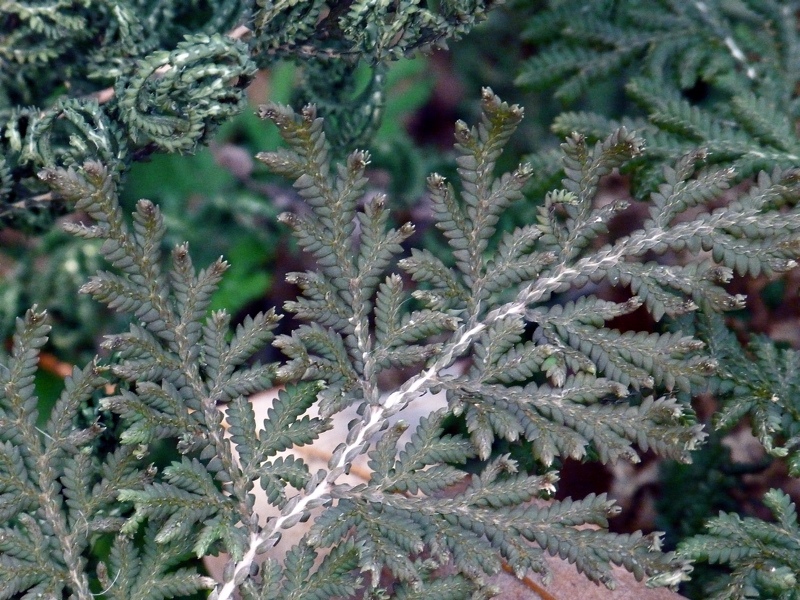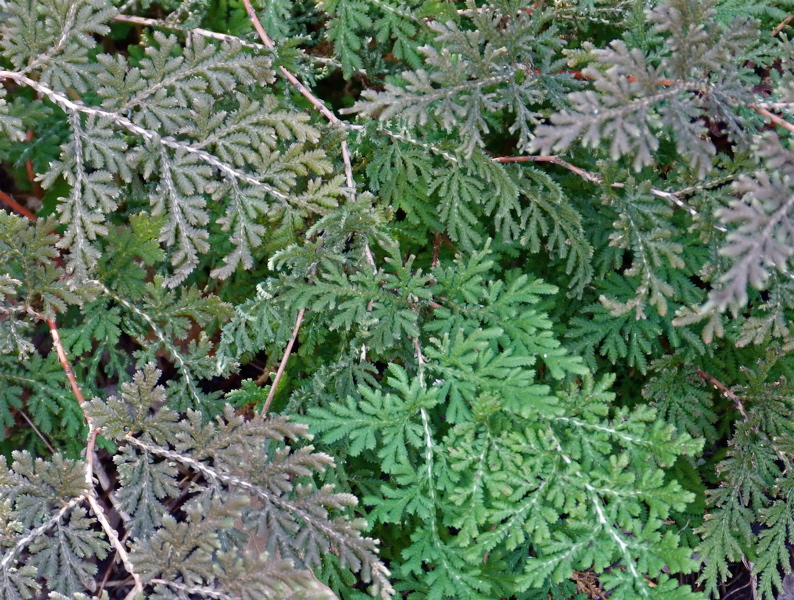Arborvitae Fern: An Evergreen Beauty
 Monday, January 17, 2011 at 11:40AM
Monday, January 17, 2011 at 11:40AM  Selaginella braunii is known as arborvitae fern, but it's not a fern. It's also called spike moss, but it's not a moss, either.The only thing I knew about it when I bought it last year was that it was a deeply discounted, dried-up plant. However, the nursery owner assured me was still alive and would be beautiful. I had my doubts, but at a couple of dollars each, I was willing to try.
Selaginella braunii is known as arborvitae fern, but it's not a fern. It's also called spike moss, but it's not a moss, either.The only thing I knew about it when I bought it last year was that it was a deeply discounted, dried-up plant. However, the nursery owner assured me was still alive and would be beautiful. I had my doubts, but at a couple of dollars each, I was willing to try.
I bought six of them. I planted three under a large Japanese maple in the front garden, the other three closer to the house beneath some azaleas. The ones close to the house are watered often, as they are a few feet from the water faucet. The other three get watered when it rains. One under the maple died, but the other two survived, though they are growing slowly.
Now this plant has stolen my heart. Yesterday I was strolling around my garden, examining plants to see what winter has wrought and looking for signs of spring. The colors of the arborvitae fern caught my attention. While some fronds remain green, others have taken on silvery bronze colors. I love the effect.
Since last year I have learned a lot about my arborvitae fern. This plant is a lycopod, an ancient relative of plants seen in fossils. The free online dictionary defines a lycopod as a primitive evergreen moss-like plant with spores in club shaped strobiles. The small club shaped cones give the plant another name: club moss.
A native of China, Selaginella braunii will grow in zones 6-9, in shade to partial shade. It needs moist, humus-rich and well-drained soil. A lovely plant for a container, it likes humidity and also makes a good plant for a terrarium. It grows up to a foot high and will spread to about two feet. Eventually clumps will form, and it can serve as a ground cover, eliminating weeds. This is why I originally bought mine, though I will have to wait a few years for that to happen. Little roots form along the stems, and it is easy to propagate the plant by division. They grow relatively slowly, and I don't want to divide mine yet; so I am thinking about buying more. I plan to put several down in the woodland garden, where they will complement the hosta, azaleas, and ferns already growing there. I will fertilize my plants in early spring with an all purpose, slow-release fertilizer, and I promise to keep them - all of them - well watered.
 Selaginella braunii,
Selaginella braunii,  arborvitae fern,
arborvitae fern,  club moss,
club moss,  evergreens,
evergreens,  spike moss in
spike moss in  evergreens,
evergreens,  plants
plants